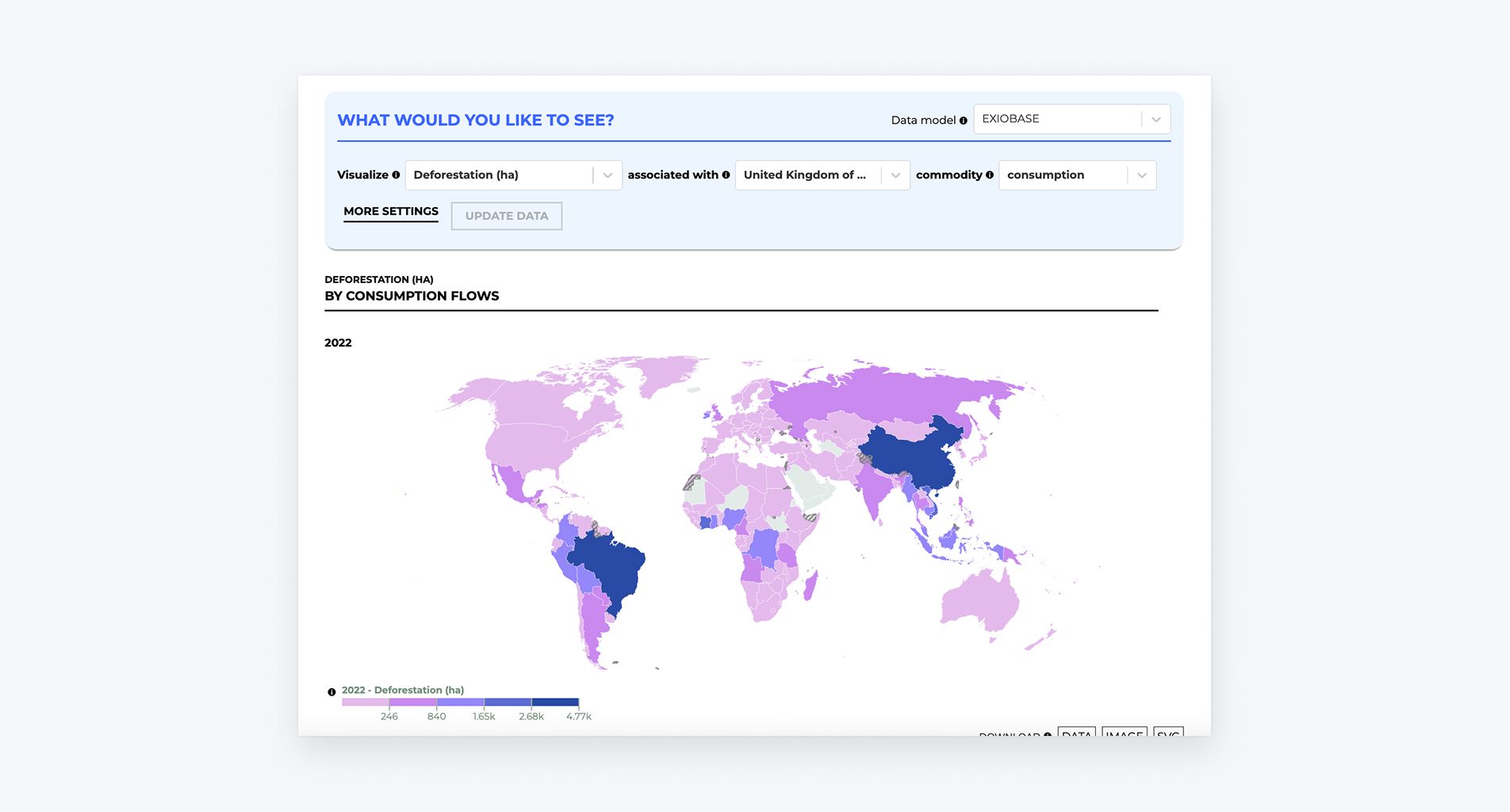The Global Environmental Impacts of Consumption Indicator (GEIC) has been developed by Trase and SEI York in partnership with the UK’s Joint Nature Conservation Committee (JNCC), initially in response to demands for a UK indicator of its overseas impact on biodiversity. First published in 2021, it links national consumption patterns to land-use change and resource extraction via international trade statistics. It enables governments to identify where environmental impacts are occurring and how they relate to commodity trade and consumption within their economies.
In 2022, GEIC was adopted as a biodiversity indicator by the UK for its 25-year Environment Plan. Since then, the indicator has been instrumental in setting the scope of the UK's Forest Risk Commodities legislation, evidencing the agricultural commodities with the largest footprints which were included. It was used by campaign groups in mobilising public responses to the official public consultation on the legislation and has also acted as a resource for continued scrutiny of the government for the delays in publishing secondary legislation.

Dashboard
In 2024, it was made an official UK statistic. The data also provided key evidence for the UK Parliament’s Environmental Audit Committee’s report on the UK’s contribution to tackling global deforestation and recommendations on addressing it.
GEIC now provides national-level data for over 180 countries. It is freely available for use on a voluntary basis as a national indicator for reporting against the Convention on Biological Diversity, and can complement other indicators to provide a fuller picture of biodiversity impacts.
To date, as well as its uptake in the UK, the framework has also been successfully applied to assess supply chain impacts for governments such as Germany and Belgium.
Commodity production, driven by demand from unsustainable consumption, is the single biggest driver of habitat and biodiversity loss globally. The GEIC indicator is therefore a crucial piece of evidence to tackle the nature crisis. We rely on this indicator to improve understanding of the impacts associated with consumption, and the action that could be taken to address this issue. No other tool is currently available that provides comprehensive country- and commodity-specific data estimating the impacts of consumption on an easy-to-understand interactive dashboard. In a recent consultation with users of the data, a range of use cases were recorded, from informing Free Trade Agreements, to designing forest risk commodities legislation, to citation in a wide range of impactful reports.
Maddie Harris, Senior Evidence Specialist, Joint Nature Conservation Committee (JNCC)